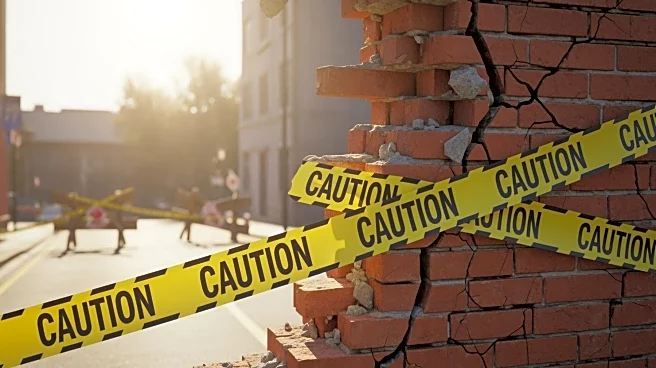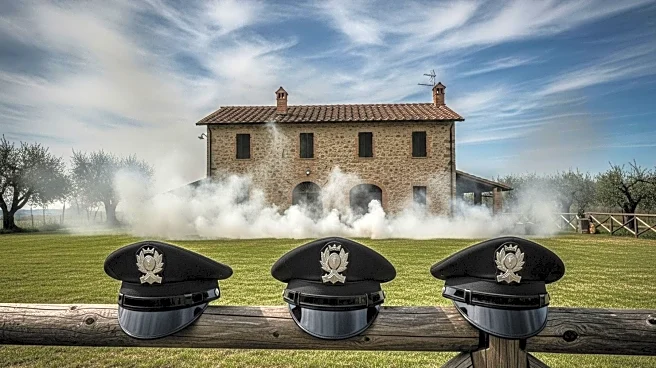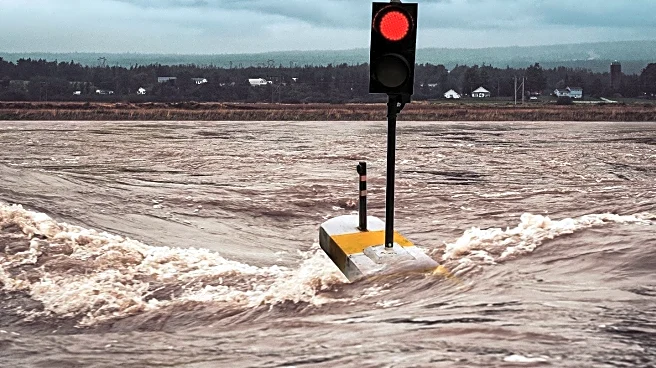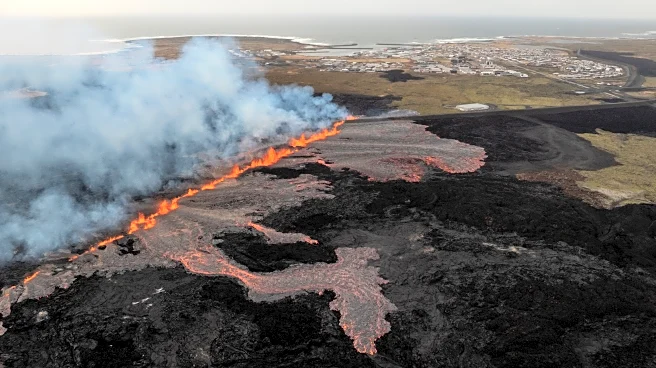What's Happening?
A powerful explosion occurred in an apartment building in Bucharest, Romania, resulting in the deaths of three individuals and injuries to at least 13 others. The blast affected the fifth and sixth floors
of the eight-story building located on Calea Rahovei in Sector 5. Emergency services responded with more than a dozen vehicles, including fire engines and mobile intensive care units. The cause of the explosion remains unclear, but authorities have shut off the gas supply in the area as a precaution. The Ministry of Health reported victims with polytrauma and burns, and one person was found dead under a concrete slab. All residents were evacuated, and search operations were conducted to identify any trapped individuals. Nearby schools were also evacuated as a safety measure.
Why It's Important?
The explosion in Bucharest highlights the potential risks associated with residential infrastructure and the importance of emergency preparedness. The incident has prompted a significant response from emergency services, showcasing the need for efficient crisis management systems. The evacuation of nearby schools underscores the broader impact on the community and the necessity for comprehensive safety protocols. This event may lead to increased scrutiny of building safety standards and gas supply systems in urban areas, potentially influencing public policy and regulatory measures in Romania and similar regions.
What's Next?
Authorities are likely to conduct a thorough investigation to determine the cause of the explosion and assess the structural integrity of the affected building. The findings could lead to policy changes or safety recommendations to prevent similar incidents in the future. The government may also review emergency response strategies to enhance preparedness for such events. Residents and stakeholders in the area will be closely monitoring developments, and there may be calls for improved safety measures and infrastructure upgrades.
Beyond the Headlines
The explosion raises questions about urban safety and the adequacy of existing infrastructure in rapidly developing cities. It may prompt discussions on the ethical responsibility of governments and developers to ensure the safety of residential buildings. Long-term implications could include shifts in urban planning and increased investment in safety technologies. The incident also highlights the cultural importance of community resilience and support systems in times of crisis.













